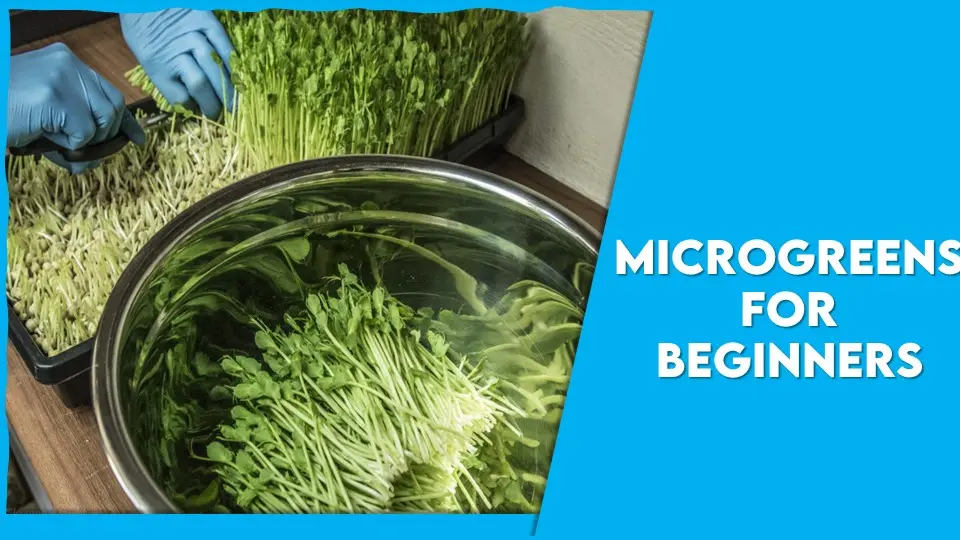With the gaining popularity in the agriculture industry, there are a few aspects that gained tremendous popularity both from the supply and demand side. Among these microgreens stand out to be one. With people being more concerned about nutrition, microgreens have offered a great way of supplementing nutrition, and people these days are much more interested in growing greens in their homes.
Considering the ease in their cultivation, it also has drawn interest from a commercial point of view. Whether you’re looking to turn your passion for growing into a profitable venture or simply share your love of microgreens with your community, the possibilities for selling microgreens are as abundant and vibrant as the greens themselves.
The idea of where to sell microgreens begins when you start the cultivation on a commercial scale and when marketing them is a constraint for you to proceed further. There is a good market potential for microgreens in the communities and villas as well. Setting up a stall in the community or selling them on a subscription basis would be beneficial.

Where To Sell Microgreens | How to Sell Microgreens
Community-Supported Agriculture (CSA) Programs
- Community Supported Agriculture serves as one of the great ways to sell your product to a wide range of audiences creating a sense of sustainability within the community.
- Introducing your product through this approach will also be a great way to increase the market penetration of your product thus reaching a wider audience.
- Firstly, CSA programs typically operate on a subscription-based model, where members purchase a share of the harvest in advance and receive regular deliveries of fresh produce throughout the growing season.
- Microgreens are well-suited for CSA programs because they offer a quick turnaround time from planting to harvest, allowing growers to provide members with a continuous supply of fresh greens throughout the growing season.

How to Sell Microgreens on Online Platforms
- Utilize online marketplaces such as Etsy, Shopify, or your website to reach a broader audience beyond your local area. Offering shipping options allows you to sell microgreens to customers nationwide or even internationally.
- Firstly, establishing an online presence is essential for selling microgreens online. To click in the online business, a website or any e-commerce platform has to be built initially so that people will get to know about the service you have been offering or the product you are trying to sell.
- A website that is well-defined and designed for this purpose using high-quality images will attract the audience. The interface should be user friendly and the navigation should attract the customer. You can also run ads to pull the target audience and for better market penetration.
- Apart from creating a new website, one can also use the existing online platforms to reach a larger audience. Try using platforms like Instagram, and Youtube and also try for paid partnerships or sponsored posts.
- This will help in reaching all the followers directly and through which organic leads are generated and mostly converted. Engage your audience with your products and content by regularly posting the stuff on these platforms.
- This will boost your business as your products get registered in their minds by getting across them daily. Interest can be generated through your live videos recorded while you are setting it up or while you are growing.
- This will work for sure and increase the sales. The problem of where to sell microgreens would be solved.

Direct Sales to Restaurants and Cafes
- Approach local restaurants, cafes, juice bars, and culinary businesses to inquire about selling your microgreens to them. The local restaurants and cafes that serve continental dishes will often prefer microgreens to be incorporated into wraps or sandwiches or as toppings to smoothies or veggie bowls.
- But, most of them often stop themselves from adding these because of the additional effort required to put into its cultivation process or because there isn’t much market that can supply them regularly.
- So, why not be the one to start this on a commercial scale? Start your production unit and reach out to the nearest cafes to introduce your product to them. This will for sure provide every beginner a chance to market their produce and the production can also be expanded based on the demand and the preference of the customers.
- Firstly, growers can research and identify potential cafe and restaurant partners that align with their target market and values.
- Look for setting up a stall near the cafe along with your complete production setup which will attract the customers not only for the produce but also people who can come to you asking for the production cost and might be interested in having one on their own.
- Try to build good relations and maintain connectivity with local chefs of the restaurant to maintain long-term relationships and this will also help to create various network channels for promotion.
- Once potential partners have been identified, growers can reach out to them directly to introduce their microgreens and discuss potential collaboration opportunities.

Subscription Boxes
- Create a subscription box service where customers can receive regular deliveries of fresh microgreens directly to their doorstep.
- Selling microgreens on a subscription basis will ensure continuity and most of the urban people residing in the villa communities will prefer this without compromising on the quality.
- If you can provide good quality and in sufficient quantities needed by them, there is nothing that can stop you from creating miracles in your business. Firstly, growers can design subscription packages that cater to different customer preferences and needs.
- This may include offering various box sizes, subscription durations, and microgreen varieties to suit individual tastes and dietary requirements.
- Supplying them on a subscription basis will allow the people to customize the produce as per their needs which will benefit us.
- To achieve this, one needs to explain the benefits of opting for subscription boxes instead of buying them on a need basis.
- Highlight the freshness, quality, and nutritional value of the microgreens, as well as the convenience and cost savings of receiving regular deliveries directly to their doorstep.
- In addition to standard subscription boxes, growers can offer themed or specialty boxes that cater to specific interests or occasions.

Home Delivery Services
- Home delivery services are a convenient method and accessible to everyone. These days home delivery serves as one of the best methods that can be accepted by almost every customer and no person can say no to this service.
- The preferences and timings might differ but the service would remain the same and acceptable to almost everyone provided that there is no compromise on the quality standards and the freshness needs to be maintained irrespective of the time.
- But, make sure the delivery option should be flexible enough and there shouldn’t be any compromise on the service availability.

Farmers’ Markets
- Farmers markets are also a good place to sell microgreens provided that good demand has to be there. Local farmer markets usually sell regular fruits, vegetables, and leafy greens.
- Keep this aside, good potential for microgreens can also be created by maintaining a regular supply of microgreens in certain areas where demand is expected. These microgreens can also be allowed to grow a little height and can sell them as a part of leafy greens.
- Do not let them grow too tall which makes them look like leafy vegetables. The standard of microgreens has to be maintained to make them distinct from other leafy greens. This will work out well with a good price.
- As farmer markets are local markets where the produce is brought and sold wholesale, you need to be a little conscious about the pricing. In the initial stages, compromise on the profits is needed.
- Later on, the market would tell you about the demand and supply graphs for you to plan your production. Competition pricing has to be kept and the customer should not feel that it is priced high.
- In this way, a good penetration of the product could happen. Once the product has reached a wider target audience, the price can be raised higher accordingly without much variation
- The production part can be carried out by anyone and almost everyone. However one needs good marketing and strategic skills to achieve a pre-defined target.
- Apart from all the mentioned things, one needs to spend a lot on promotions to make the crowd aware of what is being sold. These markets are the last option to go for and entirely depend on the pricing and the demand.

A lot of struggle and effort has to be put to achieve good results. To sell microgreens might look like an easy task but that is where a lot of energy has to be spent. That is more like a marketing aspect for which good marketing skills and knowledge are required. Once a proper market is identified and set, there is nothing that can stop you from going back. Downfall might happen and that is common in any industry. The courage to fight and bounce back on fire is all one needs.
🌱 Where to Sell Microgreens
Choose a category and discover places!
Latest Post
- Most Popular Microgreens to Grow

- Filling Trays and growing of Microgreens

- Different Ways to Grow Microgreens at Home

- Different Types of Microgreens and Their Benefits

- Sprouts vs Microgreens

- What Causes Microgreen Mold?

- Disadvantages Of Microgreens ? 3 things you must know

- Get The Ideas On Where To Sell Microgreens: The 6 Best Ways

- How to grow Microgreens without Soil: Easy tips for Gardener

- top 10 Most Profitable Microgreens In The Us

- Do Microgreens Regrow? – Best Ways To Regrow Them

- Who Invented Microgreens ?- Revealing All The Hidden Truths

- 5 Easy Microgreens For Beginners

- What Causes Microgreen Mold – A Big Threat To Microgreens

- How To Grow Barley Grass – A Seedling To Amazing Superfood

- Microgreens vs Sprouts – Are They Same? – Let’s uncover the Facts

- Do I Need A License To Sell Microgreens – Things To Be Noted

- Microgreens Business – A New Boost To Entrepreneurial Revolution

- Where To Buy Wheatgrass – What Would Be The Best

- How to Grow Cilantro Sprouts – The Best Facts One Needs To Know

- How To Sell Microgreens – Best Tips To Follow














